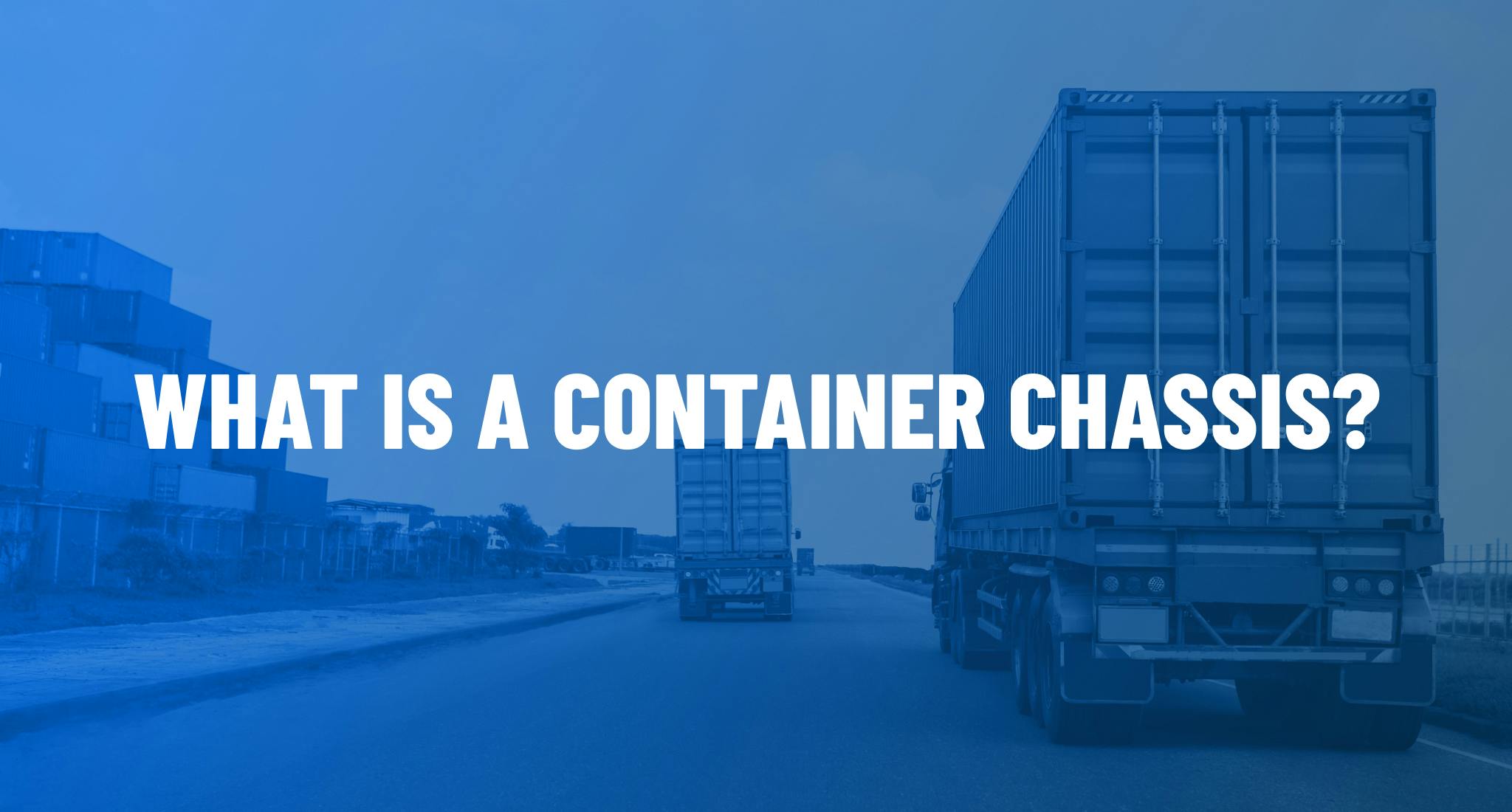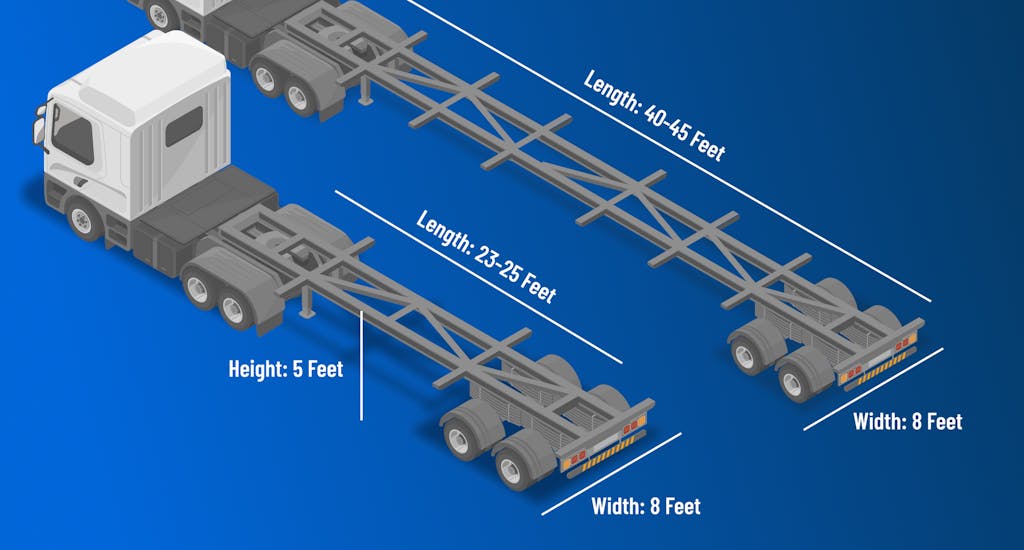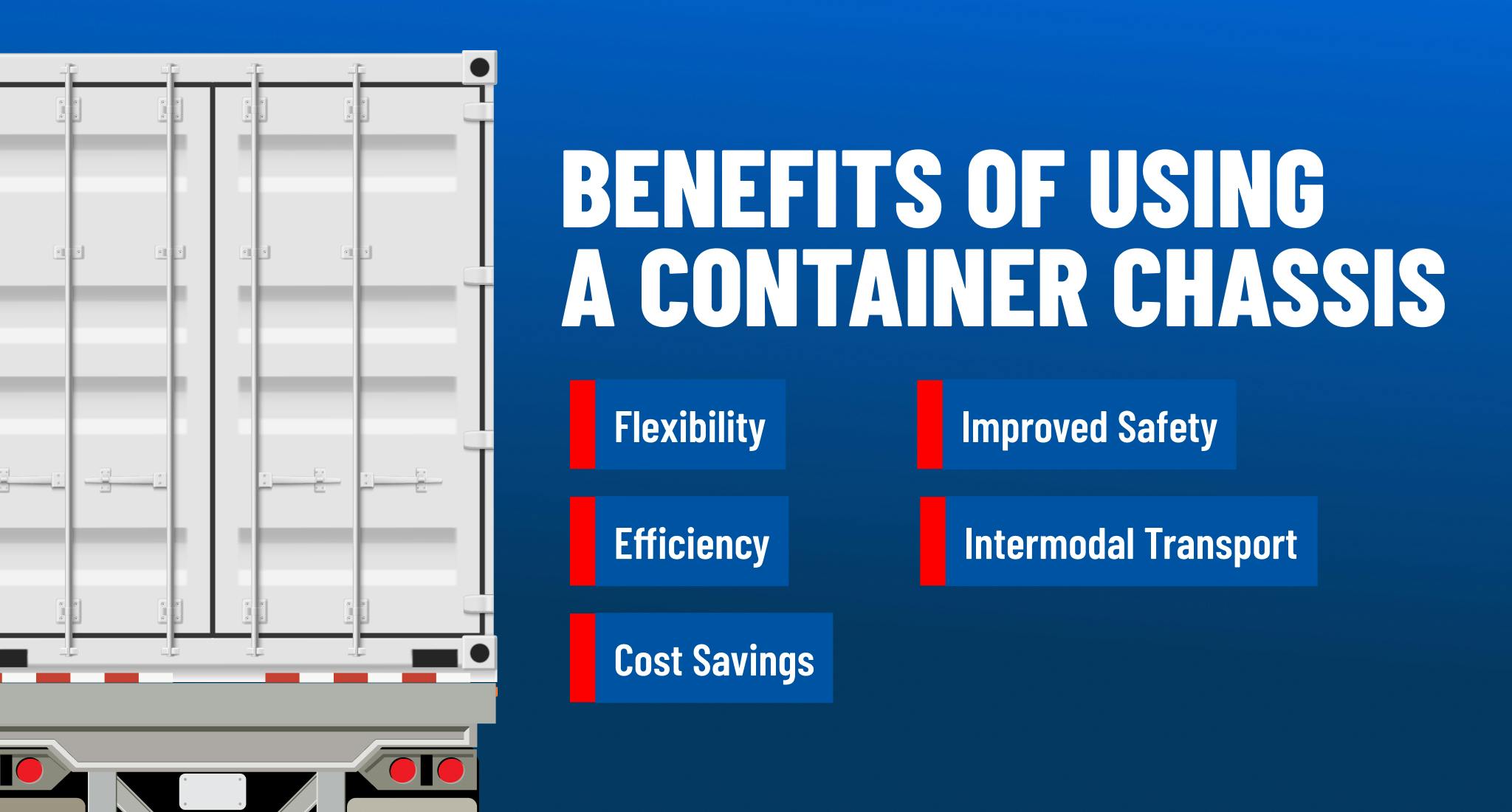What is a Container Chassis?
December 21st, 2023

A container chassis is a key player in the world of transportation, especially when it comes to moving large shipping containers. Essentially, it’s a specialized frame or trailer designed to carry these massive containers over roads.
Think of it as the link between ships or trains and the final destination of the goods. Without a container chassis, transferring containers from ports to warehouses or other locations would be a logistical nightmare.
Shipping container chassis are built to handle heavy loads and long distances. They come in various sizes and configurations to accommodate different types of containers, ensuring a secure and stable journey for the cargo. Whether it’s transporting electronics, clothing, or food items, container chassis play a crucial role in ensuring these goods reach their destination safely and efficiently.
Why Use a Container Chassis?
Container chassis are indispensable in the transportation industry, primarily due to their versatility and efficiency. They provide a stable and secure platform for transporting a wide range of shipping containers over long distances.
By using a container chassis, companies can ensure that their goods are transported safely, reducing the risk of damage during transit. This is crucial for maintaining the integrity of the products, especially when dealing with fragile or valuable items. Additionally, the use of container chassis streamlines the loading and unloading process, saving time and labor costs.
Another significant advantage of container chassis is their adaptability to different container sizes and types. This flexibility allows for a more efficient use of resources, as the same chassis can be used for multiple types of cargo. It also simplifies the logistics of container transport, as companies can use a standardized chassis for a variety of shipping needs.
This standardization not only makes the process more efficient but also helps in reducing the environmental impact by optimizing the number of trips needed for transportation.
Types of Container Chassis
There are several different types of container chassis, each designed to meet specific trailer sizes and transportation needs.
The flatbed chassis is the most common, known for its simplicity and versatility. It’s essentially a flat platform without sides or a roof, making it ideal for carrying a wide range of cargo and container sizes.
The gooseneck chassis, on the other hand, features a distinctive dip in the frame near the coupling, allowing for a lower center of gravity and easier transportation of taller containers. This design is particularly useful for navigating under bridges or through tunnels with height restrictions.
Extendable chassis are also important, offering the flexibility to adjust their length to accommodate different container sizes. Adaptability is crucial for transporting oversized or irregularly shaped cargo, and extendable chassis are the go-to for many logistics companies.
Additionally, there are many specialized trailer chassis types designed for specific containers, like refrigerated containers (reefers) and tank containers. Specialized chassis might include additional features like built-in refrigeration units or reinforced frames for added stability and safety. Understanding the specific requirements of the cargo is key to selecting the right type of chassis, ensuring efficient and secure transportation.
Typical Dimensions of a Container Chassis Trailer

Container chassis trailers come in various sizes to accommodate different container lengths. The most common chassis are designed for 20-foot, 40-foot, and 45-foot containers. A standard 20-foot chassis typically measures around 23 to 25 feet in length, with a width of about 8 feet, matching the standard dimensions of a 20-foot container.
For 40-foot containers, chassis are usually around 40 to 45 feet in length. The popular extendable chassis adjusts to carry both 20-foot and 40-foot containers, offering greater flexibility. These chassis typically stand at around 4 to 5 feet high, ensuring a low center of gravity for safe transportation.
Note that these dimensions can vary slightly depending on the manufacturer and specific design of the chassis.
Benefits of Using a Container Chassis

The use of a container chassis in transportation offers several key benefits:
Flexibility
Container chassis provide remarkable flexibility in logistics. They can accommodate various container sizes, making them suitable for a wide range of cargo types. For businesses that deal with different kinds of goods, extendable chassis brings the ultimate flexibility.
Efficiency
Choosing the right container chassis is the most important way to maximize efficiency in a logistics operation. The right chassis should streamline the process of loading and unloading containers and reduce turnaround times. You can see this efficiency in action at busy ports and terminals where time is of the essence.
Cost Savings
Using a container chassis can also lead to substantial cost savings. By improving loading efficiency and reducing the need for multiple types of transportation equipment, companies can lower their operational costs. Additionally, the ability to transport different container sizes with the same chassis reduces the need for a large fleet, further cutting down expenses.
Improved Safety
Modern container chassis also improve safety. Their design ensures that containers are securely fastened during transport, minimizing the risk of accidents. The low center of gravity of these chassis also contributes to better stability on the road.
Intermodal Transportation
Container chassis are integral to intermodal transportation. They facilitate the easy transfer of containers between different modes of transport, such as ships, trains, and trucks. Seamless transitions are essential for efficient global trade, as they allow for the smooth movement of goods across long distances, combining the strengths of different transportation methods.
How Much Does a Container Chassis Cost?
Container chassis costs can vary from $3,000 to over $15,000 depending on the size and functionality you choose.
The 20 Ft chassis is ideal for transporting smaller containers commonly used in short-haul shipments or for lighter cargo. The 40 Ft chassis, on the other hand, is more versatile and suitable for a wide range of standard shipping containers used in international trade.
The 45 Ft and 53 Ft chassis are designed for larger containers, often utilized in long-haul transportation, providing more capacity for bulkier or heavier goods. These larger chassis are frequently seen in industries like automotive, construction, and large-scale retail. The cost of each chassis type reflects its size, build quality, and the specific features it offers, ensuring that there’s a suitable option for different transportation needs.
Here’s a quick look at the cost range for these key transportation components:
| Chassis Type | Cost Range |
| 20 Ft Chassis | $3,000 – $5,000 |
| 40 Ft Chassis | $4,000 – $7,000 |
| 45 Ft Chassis | $5,000 – $8,000 |
| 53 Ft Chassis | $8,500 – $15,000+ |
FAQ
Can you put a 20 container on a 40 chassis?
Yes, you can place a 20-foot container on a 40-foot chassis, but it’s not the most efficient use of the chassis’s capacity. The 40-foot chassis is designed to carry larger containers, so using it for a 20-foot container isn’t ideal. However, in situations where a 20-foot chassis is not available, a 40-foot chassis can be a suitable alternative, provided the container is properly secured.
How does a container attach to a chassis?
A container attaches to a chassis using a locking mechanism known as twist locks. These locks are located at the four corners of the chassis and align with the corner castings of the container. When the container is placed onto the chassis, the twist locks are rotated, usually by a lever mechanism, to secure the container in place. This system ensures that the container remains stable and secure during transportation.
How many axles does a container chassis have?
The number of axles on a container chassis can vary depending on its size and design. Typically, a standard 20-foot chassis has two axles, while larger chassis, such as those for 40-foot or longer containers, may have three or more axles. The number of axles is important for distributing the weight of the container evenly and ensuring safe and efficient transportation.
Learn More with Hale Trailer
Explore Hale Trailer’s comprehensive inventory for all your shipping needs. Whether you’re looking for a specific container chassis or other logistics solutions, we have you covered. Connect with us online or in person at one of our locations to find the right equipment for your needs. At Hale Trailer, we’re committed to being your go-to partner in the shipping and logistics industry.
All the information on this website – https://www.haletrailer.com – is published in good faith and for general information purposes only. Hale Trailer Brake and Wheel does not make any warranties about the completeness, reliability and accuracy of this information. Any action you take upon the information you find on this website, is strictly at your own risk. Hale Trailer Brake and Wheel will not be liable for any losses and/or damages in connection with the use of our website.
